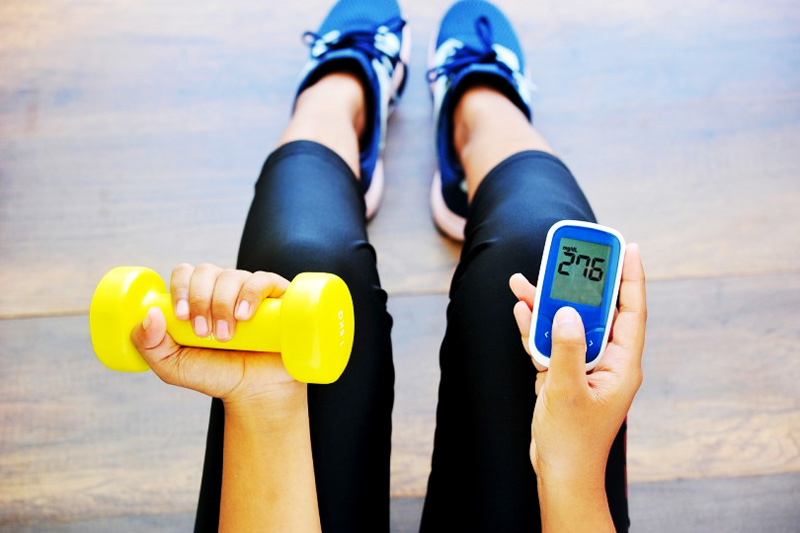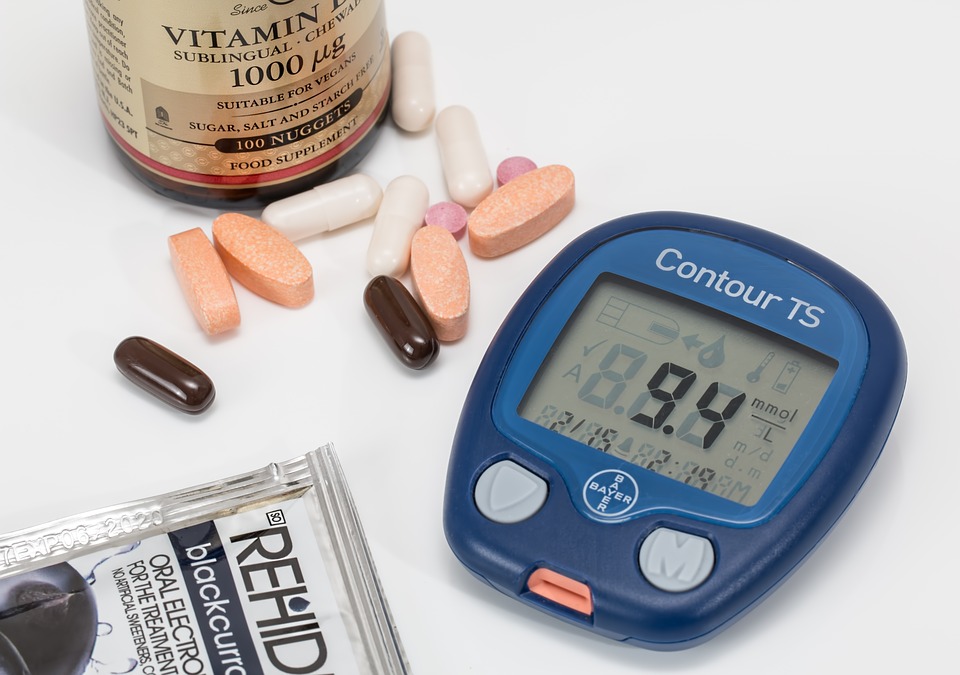Physical activity for diabetics
Overweight, obesity, poor diet, sedentary lifestyle and low physical activity are the main risk factors for diabetes. Diabetes is a disorder of the assimilation, use and storage of sugars brought by food. This results in a blood glucose level that is too high: this is called hyperglycemia.
There are two types of diabetes: type 1 diabetes, called insulin-dependent diabetes, which affects 6% of patients, and type 2 diabetes, which affects 92% of patients.
The effects of diabetes, which results from a lack of regulation between insulin and glucagon - these two hormones can reduce the level of glucose in the blood - can however be limited by the best non-drug treatment available: physical activity and sports.
It has been proven that sports activities help reduce the risk of health problems, especially for people with diabetes because their blood vessels are more fragile than for people without the disease.
Diabetes: consult your doctor before starting physical activity
Before taking out a gym membership, or ordering sports coaching at home, it is important to seek medical advice from your doctor.
Why is this? On the one hand, because we can think we are in good health and without knowing it, we are "incubating" a serious and painless disease. We do not necessarily know that our health is threatened. It is therefore reassuring to have a check-up in order to limit the risk of vascular accident during physical effort.
Secondly, if you already know that you suffer from diabetes, a medical consultation before starting a sport training allows you to know which sport is the most adapted to your disease.
The treating physician will thus help to:
- Determine the pace and intensity of the sport,
- Prevent the onset of hyperglycemic or hypoglycemic episodes,
- Consider performing an exercise test,
- Know the precautions to take,
- Check for contraindications with other prescribed medications,
- Keep a monitoring diary: check blood sugar levels, dietary changes, note the occurrence of discomfort,
- Know how to adapt the dose of insulin to be injected according to the intensity of the session.
Moving will inevitably improve the physical condition and blood sugar levels of the person with type 2 diabetes.
The advantage of consulting a doctor before taking part in sports is that if the diabetic person has a family history, the medical professional will be able to direct the patient towards an adapted treatment to follow during the effort.
If practicing a sport is a treatment for type 2 diabetes, it is necessary to respect the rhythm and intensity of the sport - according to one's glycemia -, the dietary treatment on the nutritional level and the dosage of medication.

Some tips for exercising if you have diabetes
The number ONE piece of advice for people with diabetes, although they are probably already aware of it, is to systematically check their blood sugar levels on an empty stomach, during and after physical effort.
It's a bit like checking the mirrors in a car to avoid any accident...
A diabetic person's worst fear is hypoglycemia (a drop in blood sugar levels below 4 mmol/L), which can occur up to several hours after sports training.
Here are some tips to follow when you have diabetes:
- Seek medical advice, especially if you have been sedentary for a long time,
- Avoid any violent effort of short duration: substitute a sprint of a few seconds for jogging, cycling, running at a slow pace, tennis, taking regular breaks,
- Have a small sweet snack in your pocket to prevent any discomfort or risk of hypoglycemic crisis,
- Carry your cell phone with you,
- Carry a blood glucose meter, strips, what to do in case of hypoglycemia and your diabetes card,
- Inform your family and friends, whoever is around before you exercise,
- Eat simple carbohydrates during exercise,
- Do not hesitate to discuss your feelings with your online sports coach or home sports coach,
- Rehydrate thoroughly after a fitness session,
- Adopt a draconian dietary program: ban sweets, added sugars, sugar in coffee, etc., and eat organic food, always favour lean meat and fish. A menu factory can help you regain a healthy eating habits,
- Train your family to be able to inject insulin in case of hyperglycemia.
Whether you have type 1 or type 2 diabetes, the blood sugar disorder is by no means to be neglected and you should always measure your blood sugar level.

The virtues of sport for diabetics
Some diabetic disorders are characterized by an underproduction of insulin secreted by the pancreas when the level of glucose in the blood increases after a meal: this is type 1 diabetes.
Others are characterized by a lack of receptors on the cell membranes, so that insulin does not penetrate the muscles and returns to the bloodstream, leading to high blood sugar levels.
We have already mentioned this, but exercising is a great help in regulating this dysfunction.
Sport has a hypoglycemic effect: the human body has more glucose in the blood before half an hour of sport than two hours afterwards.
In other words, sports activities - in the gym, at home or outdoors - have an influence on diabetes: they lower the blood glucose level.
Who hasn't experienced feeling very hungry and thirsty after a relatively intense jog? That's because the pancreas and liver are crying out for sugar and water!
Whether it's cardio, training, stretching, pilates, step, strength training, abdominal exercises, Zumba at the gym or sports activities such as swimming, running, moving will ALWAYS prevent diabetes complications.
Physical activity helps to stimulate the entry of glucose into the muscle cells, because the effort mobilized implies consuming more energy: people suffering from type 1 diabetes will thus be able to reduce their dose in the insulin pump.
For type 2 diabetics, sport - any sport at any level - has therapeutic virtues because it makes insulin production more efficient.
The prevalence of cardiovascular diseases, diabetes, cancers (are sport and cancer compatible?) and obesity (virtues of the sport and obesity couple) is reduced for athletes, because physical effort helps to create muscle tissue while burning calories that are harmful to the body.
However, overweight or obesity are also aggravating factors for diabetes: the more fat in the human body, the more insulin the body needs.
If the pancreas cannot produce enough insulin to satisfy this need, then the person has a high risk of developing diabetes: the fat attached to the cells prevents glucose from entering the muscles.
Any weight loss, even if limited, will therefore have a beneficial effect on preventing diabetes.
But what should you do to lose weight? We'll tell you: you need to be physically active on a regular basis!
In addition to limiting the factors of vascular, diabetic and cancerous diseases, the ex-sedentary sportsman will refine his silhouette and gain a flat belly and abdominal muscles as a bonus!
What sports to choose when you have diabetes?
According to the World Health Organization (WHO), physical inactivity is a major risk factor for non-communicable diseases (NCDs) such as cardiovascular disease, cancer and diabetes.
As we have already said, people with glycemic disorders should prefer low-intensity sports that allow for prolonged efforts.
So no sprinting! No climbing, skydiving, motor sports or scuba diving...
On the other hand, people with diabetes can do other kinds of sports:
• Yoga,
• Running,
• Walking,
• Cycling,
• Swimming,
• Table tennis,
• Tennis (non-competitive),
• Team sports (soccer, volleyball, handball, basketball).
However, it will be very important to make sure that you set reasonable goals according to your metabolism and the type of diabetes you have.


